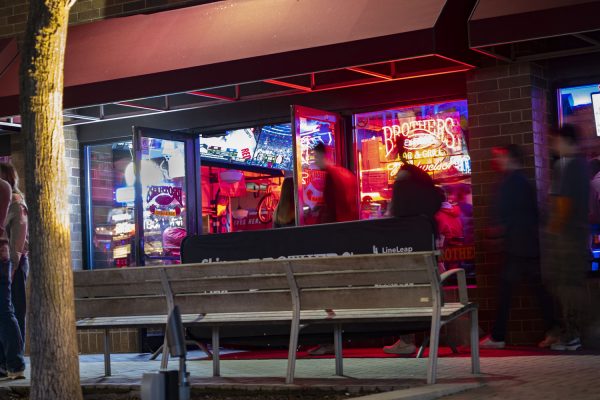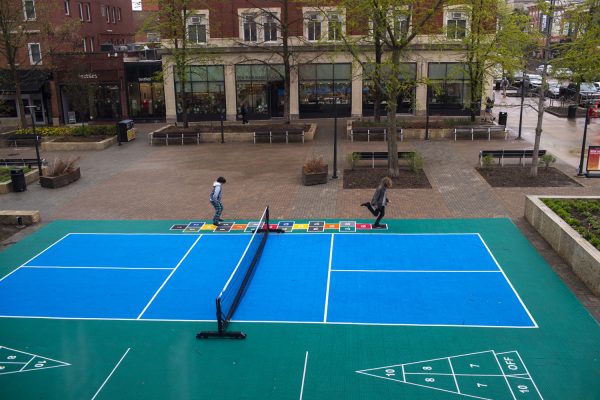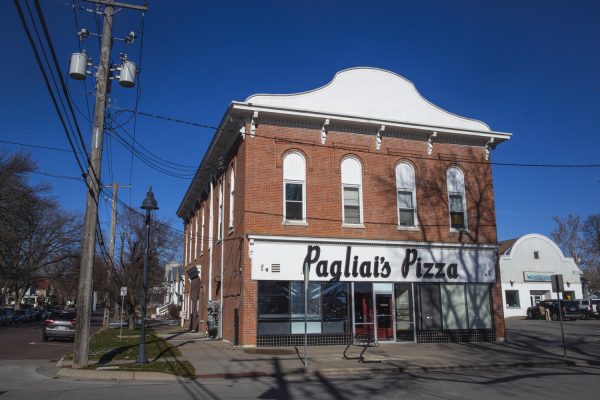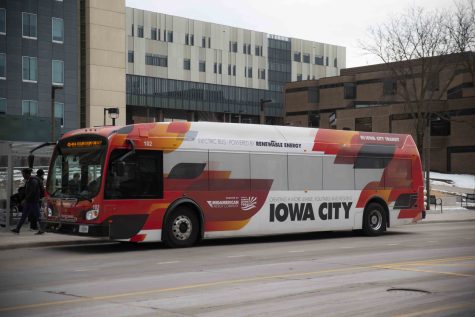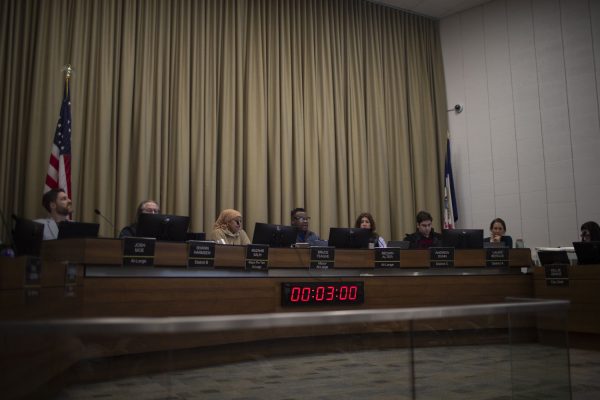Public Space One works on accessibility compliance in new location
Public Space One recently purchased two historic homes on Iowa City’s North Side, and has since been working towards making the sites ADA compliant and accessible. Improvements are currently underway.
Public Space One is seen at the new location on North Gilbert Street on Thursday, October 3, 2019. PS1 previously resided in the bottom floor of the Wesley Student Center.
December 15, 2019
With an aim to provide more accessibility to the contemporary art center, Public Space One is in the process of providing ADA accommodations to its recently purchased early 20th Century homes on Iowa City’s North Side.
The Historic Preservation Commission recently discussed how to make the new Public Space One location more accessible, aiming to make necessary but minimal renovations to the local landmarks. According to Iowa City City Council documents, the placement of accessibility ramps were determined based on the age and architecture of the entrances at each house.
Public Space One recently purchased two historic homes at 225 and 229 N. Gilbert St., leaving its current location in the Wesley Center at 120 N. Dubuque St., as previously reported in The Daily Iowan. The homes are Public Space One’s first owned and personal space, where the nonprofit organization can display art from the community.
RELATED: Public Space One purchases new Iowa City venue
“In Iowa City, if a building is a local landmark or part of a historic district or conservation district, we regulate changes to the exterior of properties,” Iowa City Historic Preservation Planner Jessica Bristow said.
Bristow said she focuses on reviewing upgrades and renovations to historic buildings, such as the ones purchased by Public Space One.
The Historic Preservation Commission also worked closely with Iowa City Senior Building Inspector Tim Hennes.
“With regard to the ADA processes, they are significant to ensure that buildings that are altered and used by the public are altered to the maximum extent feasible, such that they are readily accessible to and usable by individuals with disabilities,” Hennes said.
The two homes purchased by Public Space One are Victorian style and were built around 1900 to 1904.
Bristow said that for a home must meet certain criteria to be deemed a historic landmark, including significance in American and/or Iowa City history, architecture, archaeology and culture; integrity of location, design, setting, materials and workmanship; and events that have made a significant contribution to the broad patterns of history.
“These homes were built as residences, and it throws a wrench into the equation of turning them into commercial art spaces,” Public Space One Director John Engelbrecht said.
Both Englebrecht and Bristow said that wheelchair ramps have been approved in addition to repairs to make the front and rear doors more accessible. The repairs will take place this week in order to get the project moving before the heart of winter.
Bristow said the commission added a rear deck with some access to both the north and south, and incorporated ramp access at the Hohenschuh-Hervert House on North Gilbert Street. The main floor is higher above grade than its neighbor, she added, so the length of ramp required to travel the distance to the front porch would have filled the entire front yard.
Englebrecht said an organizational need for more visibility of the location prompted the move.
“We need street level visibility; we did not have that at the Wesley Center,” Engelbrecht said. “There was also an instability with the previous location. At the time of this decision, we didn’t think that building would be around for another two or three years.”
RELATED: Public Access Television merges with Public Space One after Medicom ends contract
Engelbrecht said that Public Space One does not take accessibility at its location for granted.
“Creating space that anyone can get to is extremely important to us, in addition to being required by law,” Engelbrecht said.
When looking at the locations, Engelbrecht said he didn’t realize how much foot traffic and car traffic pass by the new space.
“With a stop sign right in front of our houses, [it allows people] to look around and not just drive by,” said Engelbrecht.
He also noted how excited the program is to be located on the North Side because of the rich history and culture in the area.
“Making [historic] buildings such as these accessible and inclusive is important for each and every member of our community,” Bristow said.









